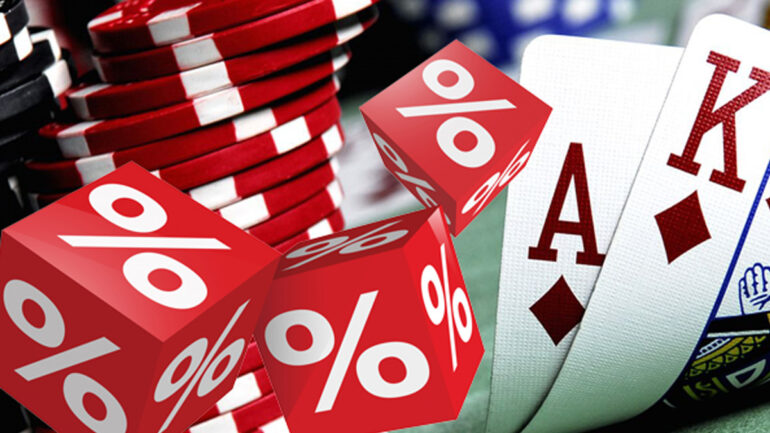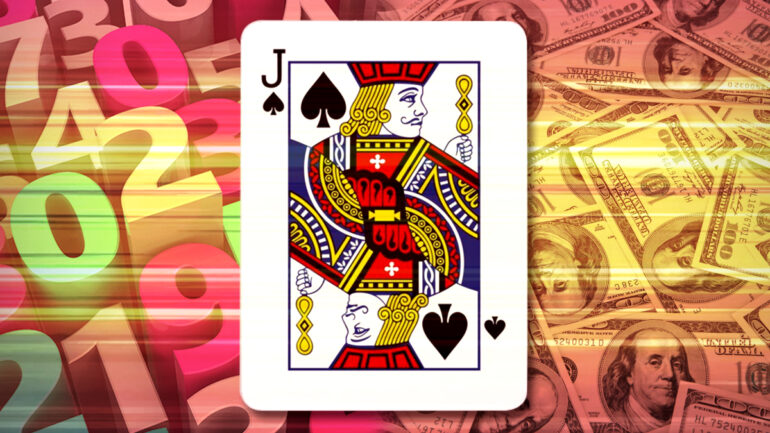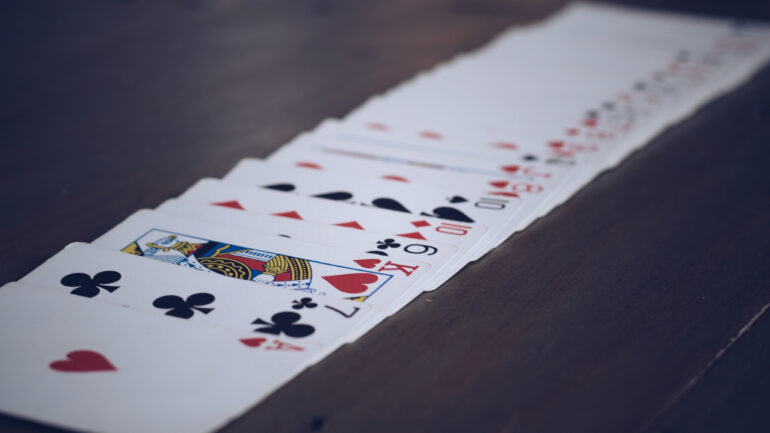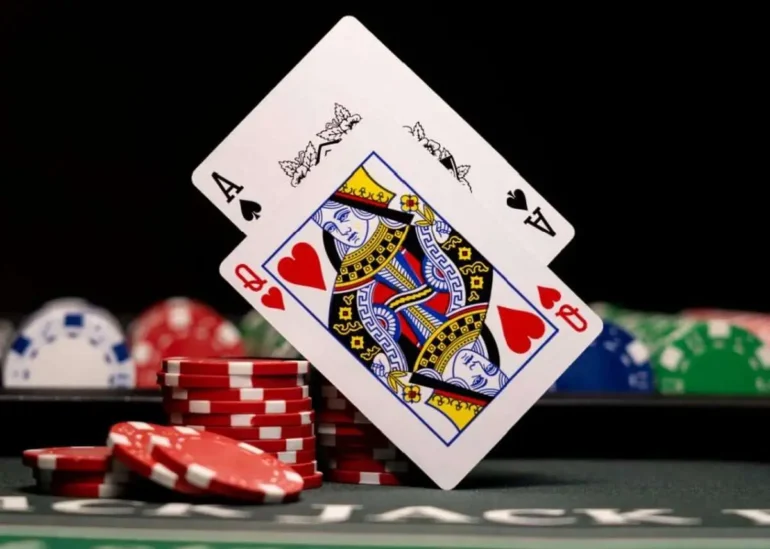
Casinos are carefully engineered to maximize profits. With bright lights, free drinks, and the thrills of games like slots, blackjack, and craps, it’s easy to get caught up in the glitz and glamour. But behind the excitement lies a sobering truth – the house always has an in-built statistical advantage known as the house edge.
As a player, understanding how the house edge works is key to managing your money and setting realistic expectations. This guide will break down the wizardry behind the curtain and shed light on the house edge so you can be an informed, strategic player.
What is the House Edge Exactly?
The house edge, also called the house advantage, refers to the mathematical margin built into casino games that ensures the house (the casino) will turn a profit over time. It represents how much of an advantage the casino like Mr Green has over the player and is usually expressed as a percentage.
For example, if a game has a house edge of 5%, for every $100 wagered at that game, the casino expects to earn about $5 in profit. The higher the house edge, the more favor lies with the casino in that game.
Over time, the house edge basically ensures that the casino will make money from its games, while players will lose money. It may not seem significant on one spin of a slot or one hand of blackjack, but small margins add up over thousands and thousands of bets. This is why casinos can afford opulent hotels, fountains, and buffets despite some players winning big.
Where Does the House Edge Come From?

The house edge originates from the mathematical foundations of casino games and the built-in odds that favor the house. In games like roulette, there are more losing numbers than winning numbers on the wheel. In card games like blackjack, the player has to act before seeing the dealer’s cards. These dynamics tilt the scale towards the house.
Casinos also maximize the house edge by limiting options favorable to the player, like prohibiting surrender in blackjack or in some cases, removing the 00 pocket from American roulette wheels. Furthermore, rules like dealer standing on soft 17 in blackjack versus hitting add over a 2% swing in house edge, demonstrating how subtle tweaks have an outsized impact.
Of course, payouts are also crafted to benefit the house. True odds dictate that a bet with a 1 in 38 chance of hitting, like a single number in roulette, would pay out 37 to 1. But roulette wheels only pay 35 to 1 to create that cushion for the house.
Understanding House Edge Lets You Make Smarter Bets
Armed with knowledge about the house edge, smart players can make decisions that minimize it, stretching their gambling bankroll. For instance, betting on the banker in baccarat gives the house an edge of just 1.06% compared to betting on the player, who has a higher 1.24% edge. Likewise, sticking to bets with better odds like the Pass Line in craps over more risky bets works to reduce exposure.
The house edge also helps players identify “sucker bets” – wagers that look enticing but have a high house edge, like betting on 6 or 8 in craps with a massive 9.09% edge for the house. Avoiding these helps to direct money towards bets with lower margins.
Game Selection Matters

One of the biggest factors under player control is choosing games with a lower house edge, as the difference between games can be dramatic. Here are house edges across some popular casino games:
| Game | House Edge |
| Blackjack (perfect basic strategy) | 0.5% |
| Baccarat (Banker bet) | 1.06% |
| Craps (Pass/Come bet) | 1.41% |
| Roulette (Both 0 & 00 slots) | 5.26% |
| Slots | 4-12% |
| Keno | 20-40% |
As demonstrated above, the house advantage fluctuates widely. A game like blackjack played flawlessly gives the house a tiny 0.5% edge, while keno has an egregious 20-40% edge. Even different variants see a variance, like how single zero roulette wheels with one less pocket slice the house edge nearly in half compared to the common double zero wheels.
This is why game selection is so vital – it affords players the power to reduce the built-in margin against them and stretch their gambling dollar. Choosing blackjack over slots or baccarat over keno slashes the profitability of the house, a rate that directly benefits the player.
Other Factors that Influence House Edge
While the foundations of the game establish the baseline house edge, other factors also impact the margins, including:
- Number of decks ─ More decks in blackjack add around 0.5% to the house edge due to less impact of each card.
- Comp rules ─ Getting comps like free hotel rooms indirectly reduces the house edge.
- Bonuses ─ Promos like cash back and bonuses provide value to offset the house edge.
- Player skill ─ Games with skill elements like blackjack have flexibility based on player decisions.
- Rules variations ─ Specific rules like dealer hitting soft 17 in blackjack increase edge.
With factors like the above in play, the house edge represents more of a moving target than a fixed constant. This is why it’s possible for skilled players to grind out small profits in otherwise negative expectation games, especially when aided by comps and promotions.
Ways Card Counting Attacks the House Edge

Card counting demonstrates how players can fully leverage skill to erase the house edge in blackjack or even flip it to their favor. By keeping track of certain cards dealt, card counters identify when favorable situations arise. When more high cards remain to be dealt, they increase their bets to capitalize.
Over time, this oscillating betting pattern allows card counters to build big profits against the house:
- Card counting identifies when the odds shift in the player’s favor.
- By betting more when the deck is rich in high cards, card counters increase the wins.
- Lowering bets when the shoe has more low cards reduces losses.
- The resulting higher volatility in the bankroll turns positive over time.
Essentially, card counting takes the inherent flexibility allowed by blackjack’s skill element and exploits it. When card counting teams develop enough skill, they grind down the house edge and rack up big scores against the casino.
This has resulted in legendary wins for teams like the MIT Blackjack Team in the 1990s, now immortalized in books like Bringing Down the House and films like 21. But it also led to advanced countermeasures from casinos, like continuous card shuffles and banning suspected counters.
Setting Reasonable Expectations

While it may seem grim knowing how the house edge stacks against players, remembering a few key points helps set reasonable expectations:
- Casinos provide entertainment, and as with activities like going to the movies or concerts, expect to pay some costs for the experience. Gambling too has a price tag for playing.
- With games like blackjack and video poker, perfect play cuts the house edge to under 1%, making it very beatable in the short run akin to stocks having up years.
- Promos, comps, and VIP perks provide immense tangible value that defrays the house edge for players.
- Over a lifetime, almost no one has a big enough sample size of play for the house edge law of large numbers to kick in fully.
Keeping perspective of the house edge this way helps balance the math against the real-world experiences for recreational gamblers. Losing sessions or even losing trips become expected, while timely wins sprinkle in excitement.
And for those interested in elevating into serious, professional advantage players, understanding house edge intricacies lights the path. Mastering blackjack card counting, for example, unlocks reliable profits once card counters develop enough skill.
So while the house may always have an edge, players need not resign themselves as helpless victims. After all, knowledge is power, and understanding house edge nuances equips players to make better decisions. Use it as fuel to play smarter. The glitzy casino floor awaits.
